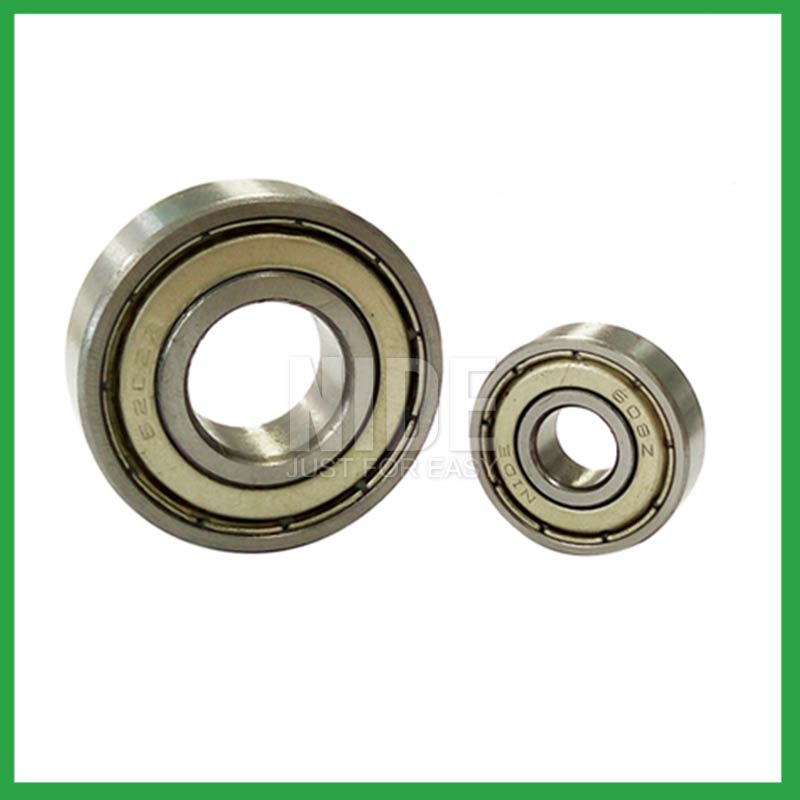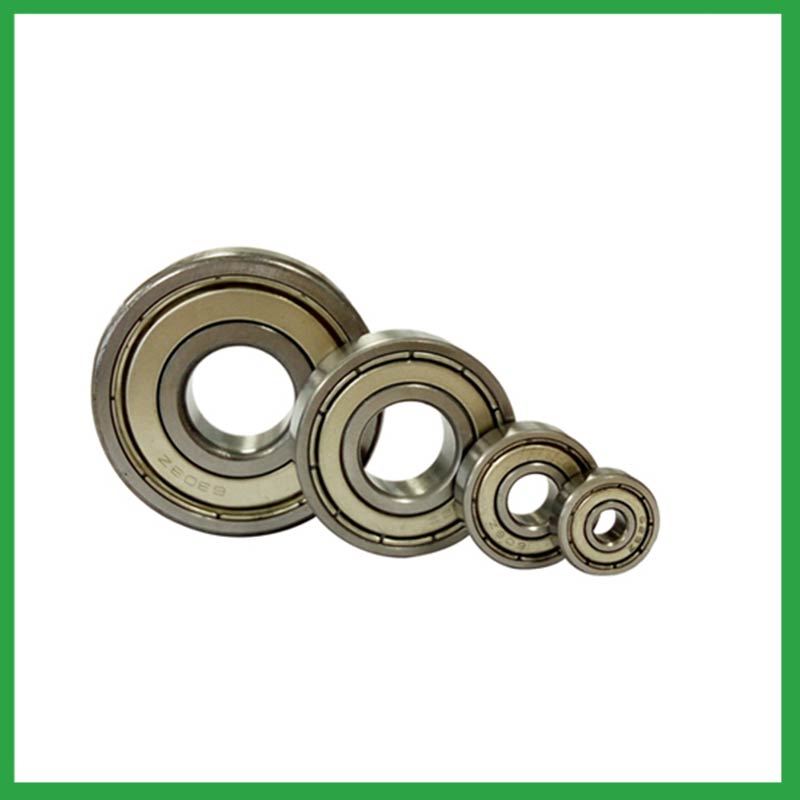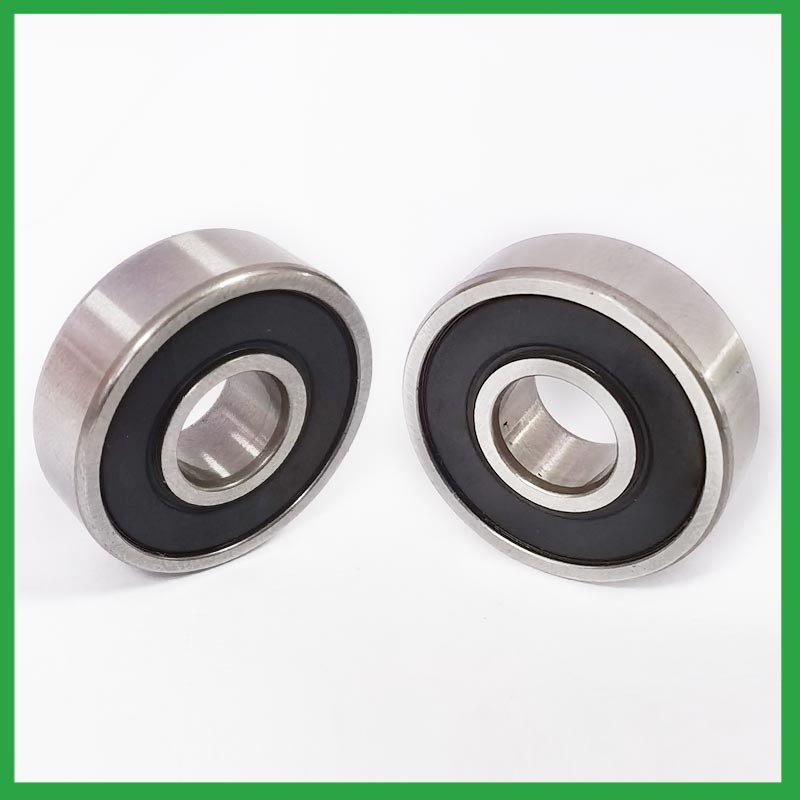PRODUCTS
CONTACT US
Ningbo Nide International Co., Ltd.
一一
· Contact person:Jack Zeng
· Mob/Whatspp/WeChat:0086-13738869026
· Email:emarketing@nide-group.com;marketing4@nide-group.com
· Add:No. 169, Wohushan Road, Daqi Subdistrict, Beilun District, Ningbo, China

Nide team could manufacture ball bearing as per customer’s drawing and samples.
If customer only has samples, we could also design drawing fo r our customer.
We also provide customized service.
Our ball bearing is widely applied the different industrials.
Established in 2010, Haishu Nide International is a modern enterprise specializing in the production of high-density bearings, with a factory area of over 9000 square meters. We have an excellent staff team, excellent production lines, and complete testing methods. Our main products are spherical roller bearings, cylindrical roller bearings, motor cover and lamination,fan,shaft,commutator,magnet,carbon brush, etc.
At present, our products have been sold to Oceania,Europe,America and other regions, as well as more than 50 countries and regions such as Turks and Caicos Islands,Western Sahara,Slovenia. Strict quality control system, plus strong technical team allow us to offer the reliable machines to our customers. The philosophy of ” Service, Profession, Prompt, Innovation” help us to win the customer favor.

| Parameter | Information |
| Product Name | 2 cm ball bearing |
| Place of Origin | China |
| Brand Name | Nide |
| Material | stainless steel, etc. |
| Type | Ball |
| Warranty | 3months-1year |
| Port | Ningbo/Shanghai |
| Application | aviation engines,small rotary motors, etc. |
| Size(mm) | customize |
| Color | Silver gray+customized |
| Precision Rating | as per customer's requirement |
| Certification | ISO 9001 Certification,ISO9001:2015 certificate,CE-stator coil winding machine,etc |
| Feature | High precision,High speed...etc |
| Packaging Details | Suitable for sea transportation |
| Service | one-stop service |
| Model Number | ball bearing |
| Supply Ability | 100000-500000 Piece/Pieces per Month |
| Lead time (days) | 15-20 (To be negotiated) |
Please note: The above table data is for reference only. For specific information, please contact us.
2 cm ball bearing have the advantages of durability,high efficiency,lightweight,compactness, and high load, and are used in main motion mechanisms and components, such as transmission shafts,resistors,tires, different motion mechanisms and accessories of airplanes and motorcycles.
During the disassembly process, the outer shell should be kept intact to avoid unnecessary damage;
When replacing installation components, attention should be paid to the accuracy of the support components to prevent deformation;
During the disassembly process, attention should be paid to protecting the surface quality of the ball bearing to ensure its performance;
During the operation, attention should be paid to removing surface dust to ensure the quality of the ball bearing.
Ball bearings have many advantages, making them highly competitive in the market.
Firstly, they are very durable and have good wear performance, making their service life longer than many other types of bearings.
Secondly, they are easy to install and can provide low friction performance in various applications.
Thirdly, they require a relatively low level of maintenance, making them cost-effective.
In addition, compared to many other types of bearings, their purchase cost is relatively low, making them an economical choice.




2 cm ball bearing---FAQs Guide
2.Can 2 cm ball bearing operate in high-temperature environments like industrial ovens or furnaces, and how are they protected from heat-related damage?
3.How do preloaded 2 cm ball bearing enhance rigidity and reduce clearance in high-precision applications?
4.Can 2 cm ball bearing be customized with special coatings or treatments to meet specific industry standards or regulatory requirements?
5.Are there self-aligning 2 cm ball bearing that accommodate misalignment and shaft deflection in rotating equipment?
6.What maintenance practices are recommended to extend the lifespan of 2 cm ball bearing and prevent premature failure?
7.How do 2 cm ball bearing handle radial loads, axial loads, and combined loads, and what are their load-carrying capacities?
8.How do different 2 cm ball bearing designs, such as deep groove, angular contact, or thrust bearings, cater to specific applications?
9.Are there ongoing research and development efforts aimed at improving 2 cm ball bearing materials, designs, and lubrication techniques?
10.Are there specific 2 cm ball bearing designed for applications in the aerospace and aviation industries, and what standards do they adhere to?
11.What is the typical noise level associated with 2 cm ball bearing, and how are noise-reduction techniques applied?
1.How do sealed 2 cm ball bearing prevent the ingress of contaminants and extend the bearing's service life?
Contact seals are a type of seal where the sealing lip physically touches the inner raceway of the 2 cm ball bearing. They create a narrow line or zone of contact that forms a barrier to prevent the escape of lubricants and the ingress of contaminants. Because the seal keeps dirt and other contaminants out, it can offer a longer operating life of the bearing or prevent premature bearing failure. Sealed bearings can be considered lubricated for life, which eliminates the need for a relubrication process.
2.Can 2 cm ball bearing operate in high-temperature environments like industrial ovens or furnaces, and how are they protected from heat-related damage?
2 cm ball bearing are capable of working at temperatures up to +842°F (+450 °C). Special lubricants, seals and coatings make this possible by protecting the ball bearings from heat damage.
3.How do preloaded 2 cm ball bearing enhance rigidity and reduce clearance in high-precision applications?
Enhance Rigidity: By applying a controlled axial force, preload increases the bearing's resistance to external forces and moments. This heightened rigidity is essential in applications where any deflection or misalignment must be minimized, such as in machine tools or robotic systems.
4.Can 2 cm ball bearing be customized with special coatings or treatments to meet specific industry standards or regulatory requirements?
Yes, 2 cm ball bearing can be customized with special coatings or treatments to meet specific industry standards or regulatory requirements.
1. Corrosion-resistant coatings: These coatings are used to protect the bearings from corrosion caused by exposure to moisture, chemicals, and other corrosive substances.
2. High-temperature coatings: These coatings are used to improve the thermal stability and performance of bearings in high-temperature environments.
3. Food-grade coatings: These coatings are specially designed for applications in the food and beverage industry, where bearings come into contact with food, beverage, or pharmaceutical products.
4. Anti-static and non-conductive coatings: These coatings are used to dissipate static electricity, which can cause damage to electronic components.
5. Specialized lubrication treatments: Bearings can be treated with specialized lubricants that meet specific industry standards or regulatory requirements.

5.Are there self-aligning 2 cm ball bearing that accommodate misalignment and shaft deflection in rotating equipment?
These 2 cm ball bearing are particularly suitable for applications where misalignment can arise from errors in mounting or shaft deflection. A variety of designs are available with cylindrical and taper bores, with seals and adapter sleeves and extended inner rings.
6.What maintenance practices are recommended to extend the lifespan of 2 cm ball bearing and prevent premature failure?
Proper handling and installation of 2 cm ball bearing is essential to preventing premature failure. Ensure that bearings are stored and transported in a clean, dry, and vibration-free environment. During installation, ensure that bearings are properly aligned, and torque is applied correctly.
7.How do 2 cm ball bearing handle radial loads, axial loads, and combined loads, and what are their load-carrying capacities?
The type of bearing used also varies between these loads. While deep-groove 2 cm ball bearing are better equipped to handle radial loads, thrust ball bearings are designed for axial loads. However, it's essential to note that most bearings, such as angular contact ball bearings, can handle both radial and axial loads.The Bearing Static Capacity, Co, is the maximum load that can safely be applied to a non-rotating bearing that will not cause subsequent bearing operation to be impaired. It is based on calculated contact stress at the center of the most heavily loaded rolling element where it contacts the Inner Race.
8.How do different 2 cm ball bearing designs, such as deep groove, angular contact, or thrust bearings, cater to specific applications?
Deep groove 2 cm ball bearing: Deep groove ball bearings are the most common type. They can handle both radial and axial loads. Angular contact ball bearings: Angular contact ball bearings have higher than average internal axial clearance. They can handle axial loads in one direction and moderate radial loads.

9.Are there ongoing research and development efforts aimed at improving 2 cm ball bearing materials, designs, and lubrication techniques?
A custom 2 cm ball bearing can satisfy almost any customer’s needs. Your application may need a needle roller or ball bearing, a radial or angular contact design, a plain carbon steel bearing with anti-corrosion coatings or stainless steel, a thrust bearing or a spherical bearing, tight or loose radial play, sealed or non-sealed designs
10.Are there specific 2 cm ball bearing designed for applications in the aerospace and aviation industries, and what standards do they adhere to?
Airframe control 2 cm ball bearing are specialized bearings tailored for aircraft structures, particularly control systems and surfaces. Designed for low-speed oscillatory applications, they offer precision and support, effectively managing misalignments and flight-induced stresses.
Airframe Control bearings are lightweight, corrosion-resistant, grease-lubricated, and are sealed on most occasions. They come in precision grades for running accuracy.
11.What is the typical noise level associated with 2 cm ball bearing, and how are noise-reduction techniques applied?
To measure in accurate way the 2 cm ball bearing noise under rotation during their manufacturing process is a key activity particularly in the production of medium, small and ultra-small deep groove ball bearings. This capability in bearings noise analysis has become the real distinguishing element between a standard bearings noise equipment and a superior class one.
The various types of vibration and sound in rolling bearings can be grouped in four main categories: structural, manufacturing, handling and other. The structural vibration consists mostly of race, click, squeal and cage noise: it can be continuous or intermittent depending on specific cases. The manufacturing vibration is instead related to the waviness noise generated by the geometrical imperfections of inner and outer ring and of rolling elements, being always continuous in nature. The so-called handling vibration is normally associated with flaw and contamination and is generating – in most of the cases – irregular noise. Then there are other types of vibrabition that include noise generated by sealing and lubricant (irregular) or by runout (continuous).

